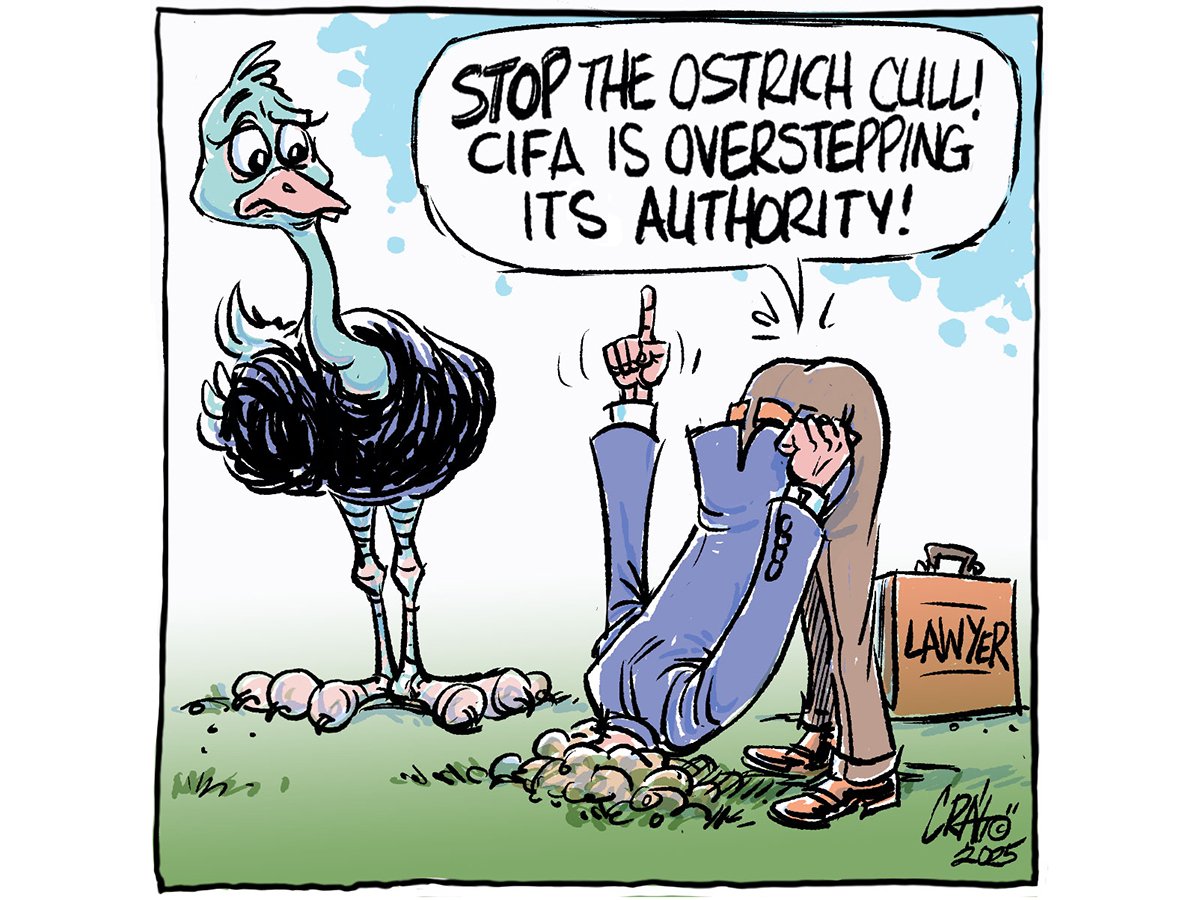THE CROP is not in the bin yet, but there is optimism for good production at the best prices in years. After years of inadequate income, there are many areas on the farm that could use the money this crop will bring.
But the bounty also raises the opportunity to assist those less fortunate. It is a testament to Canadian farmers’ generosity that even in recent hard years they didn’t forget that many around the world are worse off.
The Canadian Foodgrains Bank (CFB) is one agency many farmers use to reach out to the poor and hungry. It has done good work with minimal administrative costs for years, so it was heartening last week to learn that the federal government has rewarded its efforts with improved funding arrangements.
Read Also

The Canadian Food Inspection Agency’s animal health efforts require producer support
Livestock producers should be concerned by how an ostrich farm is using crowd funding to help it defy a Canadian Food Inspection Agency order to destroy more than 300 birds.
The Canadian International Development Agency has increased funding for CFB to $20 million per year from $16 million and has extended the funding agreement to five years from three. CIDA matches every dollar the CFB raises with an additional $4.
The good news didn’t stop there. Anglican and Catholic development bodies joined the foodgrains bank, providing it with the opportunity to work with thousands more parishes to raise food and money.
Perhaps because of its close association with farmers, the CFB brings a sophisticated response to the problem of hunger.
It provides emergency relief but more importantly funds food-for-work programs directed at improving a community’s ability to feed itself.
The foodgrains bank is aware that hunger is not a matter of food scarcity but of poverty. In the past decade, even as agricultural subsidies in developed countries helped generate global surpluses driving down grain prices, the number of hungry people increased.
In 1996 the world’s nations gathered in Rome and pledged to halve the number of hungry people by 2015. A United Nations Food and Agriculture Organization 10th anniversary report on the pledge showed the number of undernourished had climbed to 820 million from 800 million.
Against that backdrop, Canadian farmers will appreciate a well-educated partner in the aid sector as the food vs. fuel debate generates headlines.
The often hysterical commentary accompanying that debate could threaten to derail the new biofuel market that offers the first hopeful ray of financial stability for farmers in developed countries in many years.
The issue needs a rational discussion that includes not only awareness that biofuel’s new demand has put modest upward pressure on food prices, but also created an opportunity for poor farmers in developing countries to get more money for their crops and invest in improved production.
The association between farmers and the foodgrains bank will help the latter be a voice of informed reason in this debate.
Bruce Dyck, Terry Fries, Barb Glen, D’Arce McMillan and Ken Zacharias collaborate in the writing of Western Producer editorials.














